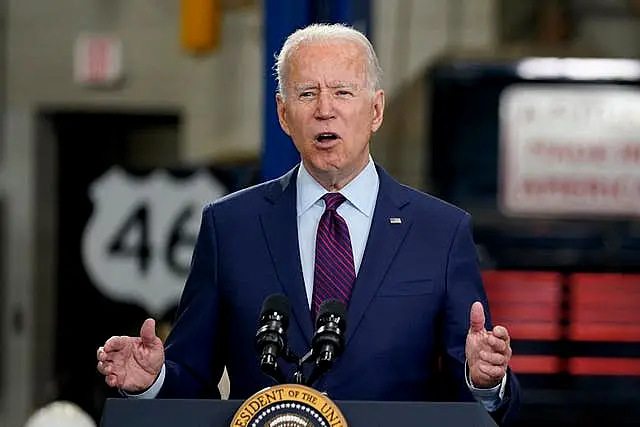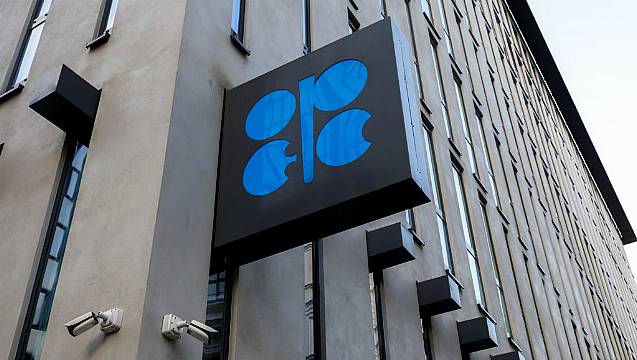Major oil-producing countries led by Saudi Arabia and Russia are wrestling with whether to make another cut in supply to the global economy as the Opec+ alliance struggles to prop up sagging prices that have been a boon to US drivers and helped ease inflation worldwide.
The 23-member group is meeting at Opec headquarters in Vienna after sending mixed signals about possible moves.
Saudi Arabia, dominant among the oil cartel’s members, has warned speculators that they might get burned by betting on lower prices. Russia, the leader of the non-Opec allies, has indicated that no change to output is expected.
The decision comes amid uncertainty about when the slow-growing global economy will regain its thirst for fuel for travel and industry, and with producers counting on oil profits to bolster their coffers.

Oil prices have fallen even after Opec+ slashed two million barrels per day in October, angering US President Joe Biden by threatening higher prices a month before the mid-term elections.
Then, several Opec members led by the Saudis made a surprise cut of 1.16 million barrels a day in April.
International benchmark Brent crude climbed as high as 87 dollars per barrel but has given up its post-cut gains and been loitering below 75 dollars per barrel in recent days. US crude has dipped below 70 dollars.
Those lower prices have helped US motorists as the summer travel season kicks off, with prices at the pump averaging 3.55 dollars (£2.85), down 1.02 dollars (82p) from a year ago, according to auto club AAA.
Falling energy prices also helped inflation in the 20 European countries that use the euro drop to the lowest level since before Russia invaded Ukraine.
The US recently replenished its Strategic Petroleum Reserve – after Mr Biden announced the largest release from the national reserve in American history last year – in an indicator that US officials may be less worried about Opec cuts than in past months.
The Saudis, on the other hand, need sustained high oil revenue to fund ambitious development projects aimed at diversifying the country’s economy.
The International Monetary Fund estimates the kingdom needs 80.90 dollars per barrel to meet its envisioned spending commitments, which include a planned 500 billion dollar futuristic desert city project called Neom.
That may have been one motivation behind Energy Minister Abdulaziz bin Salman’s warning to speculators that they will be “ouching” if they keep betting on lower oil prices.
Mr Bin Salman’s comment is not necessarily a prelude to a cut at Sunday’s meeting, said James Swanston, Middle East and North Africa economist at Capital Economics.
He said “there have been signs that the government may be readying to live with lower oil prices and running budget deficits”.
On top of that, Russia may find current prices to its liking because its oil is finding eager new customers in India, China and Turkey. Western sanctions over the war in Ukraine have forced Russian oil to sell at discounts of around 53-57 dollars per barrel.
At those prices, Moscow’s shipments avoid triggering the 60 dollar price cap imposed by the Group of Seven major democracies to try to limit oil profits flowing into Russia’s war chest.
The price ceiling allows the world’s third biggest oil producer to keep supplying non-Western customers to avoid a global shortage that would drive up prices for everyone.
Insurers and shipping companies largely based in Western countries are barred from handling Russian oil if it is priced above the cap.
Russia has found ways to evade the limits through “dark fleet” tankers, which tamper with transponders showing their locations or transfer oil from ship to ship to disguise its origin.
An Opec+ “production cut could push the price of Russian oil above the G7 price cap of 60 dollars per barrel, which would make it difficult to transport and thus to sell the oil”, commodity analyst Carsten Fritsch at Commerzbank wrote in a research note.
“Russia appears to be doing good business at the current price level.”
The International Energy Agency said in its April oil market report that Russia has not completely followed through on its announcement to extend a voluntary cut of 500,000 barrels per day through the end of the year.
In fact, Russia’s total exports of oil and refined products such as diesel fuel rose in April to a post-invasion high of 8.3 million barrels per day. That is in spite of a near-total boycott from the European Union, formerly Russia’s biggest customer.
Analysts say Opec+ faces conflicting pressures. A cut could support prices or send them higher, with demand expected to pick up later this year.

“The impact of higher oil prices on the global economy will weigh heavily on the ministers’ minds,” said Jorge Leon, senior vice president of oil market research at Rystad Energy.
“High oil prices would fuel inflation in the West right when central banks are starting to see inflation gradually recede.”
“This could prompt central banks to continue increasing interest rates, a detrimental move for the global economy and oil demand,” he wrote in a research note.







